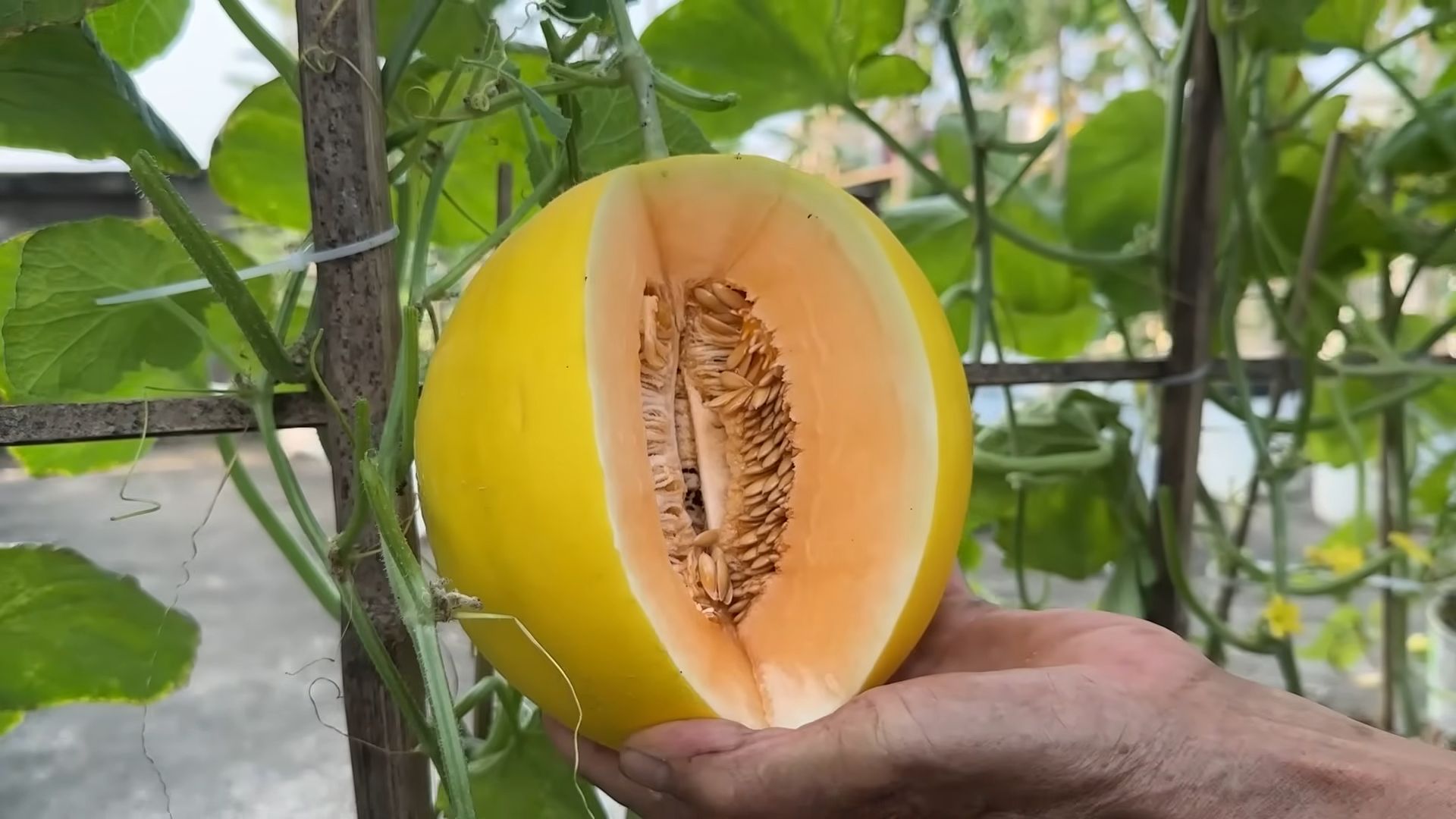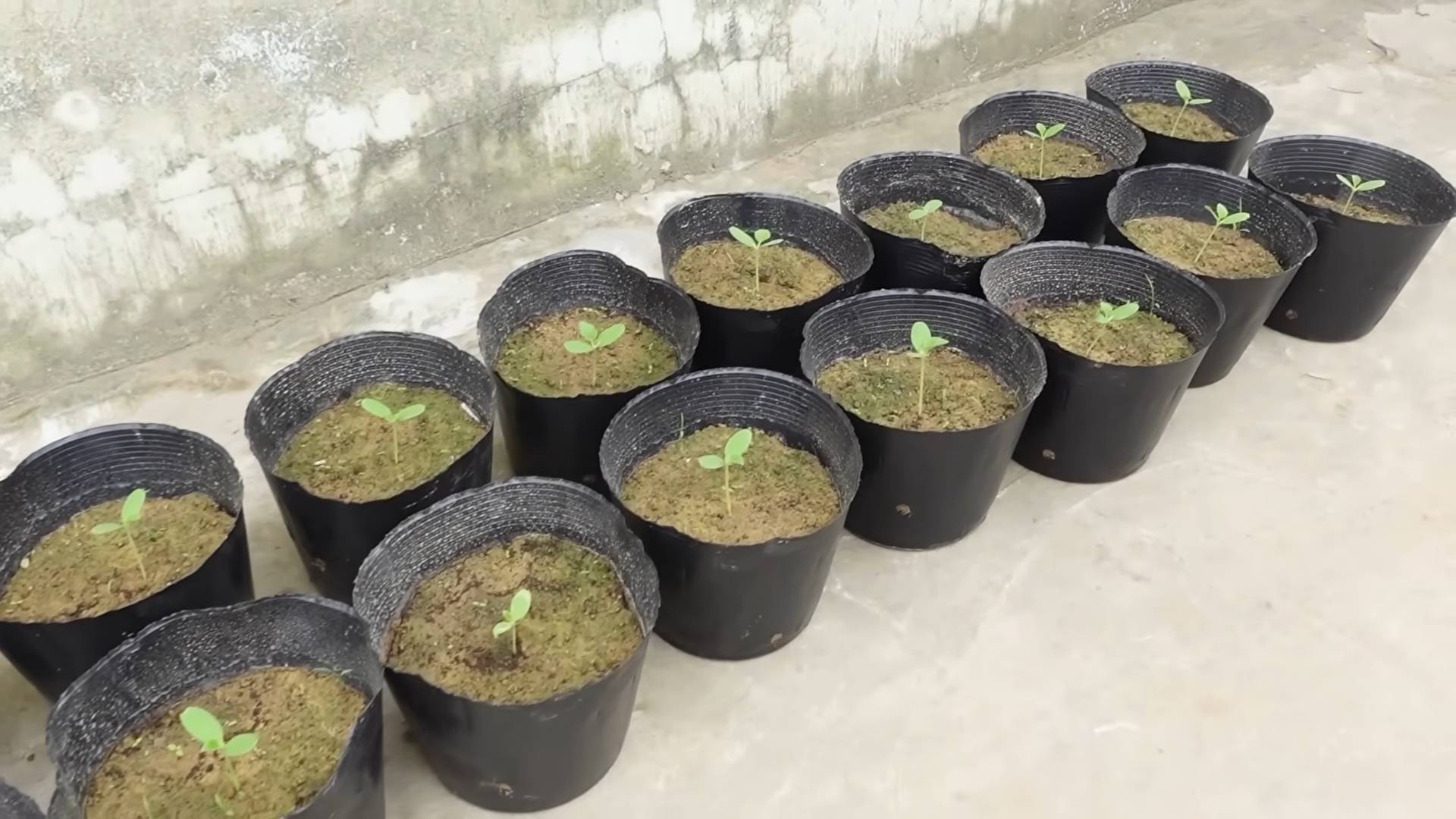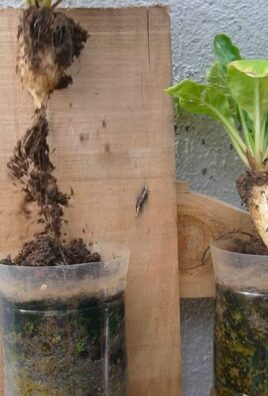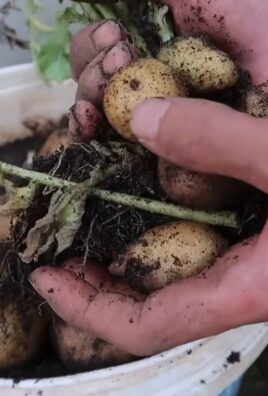Grow Melons at Home – sounds like a dream, right? Imagine biting into a juicy, sun-ripened melon you nurtured from a tiny seed, right in your own backyard! Forget those bland, store-bought melons; we’re talking about flavor explosions and the satisfaction of knowing exactly where your food comes from.
Melons have a rich history, dating back to ancient Egypt and beyond, where they were prized for their sweetness and refreshing qualities. For centuries, cultivating melons was a sign of prosperity and agricultural skill. Now, you can tap into that tradition, even if you only have a small space.
But why should you bother learning how to grow melons at home? Well, for starters, homegrown melons taste infinitely better. Plus, you control the entire process, ensuring they’re free from harmful pesticides and chemicals. And let’s be honest, there’s something incredibly rewarding about nurturing a plant from seed to fruit. I know, I know, it sounds intimidating, but trust me, with a few simple tricks and DIY hacks, you can be harvesting your own delicious melons in no time. This article will guide you through the process, offering easy-to-follow steps and insider tips to help you succeed, even if you’re a complete beginner. So, grab your gardening gloves, and let’s get started!

Growing Delicious Melons at Home: A Comprehensive DIY Guide
Hey there, fellow gardening enthusiasts! I’m so excited to share my secrets for growing juicy, flavorful melons right in your own backyard. Forget those bland supermarket melons – with a little know-how and effort, you can enjoy the sweet taste of homegrown goodness. This guide will walk you through every step, from choosing the right variety to harvesting your prize-winning melons. Let’s get started!
Choosing the Right Melon Variety
Before we dive into the nitty-gritty, it’s crucial to pick a melon variety that suits your climate and growing conditions. Not all melons are created equal! Here’s a quick rundown:
* Watermelons: These are the summer classics! Look for varieties like ‘Sugar Baby’ (compact and early), “Crimson Sweet” (disease-resistant and flavorful), or “Jubilee” (large and impressive). Consider seedless varieties for convenience.
* Cantaloupes: Known for their fragrant aroma and orange flesh, cantaloupes are a delightful treat. ‘Athena’ (early and productive), ‘Hales Best Jumbo’ (classic flavor), and ‘Ambrosia’ (sweet and juicy) are excellent choices.
* Honeydew Melons: These smooth-skinned melons offer a refreshing sweetness. ‘Honeycrisp’ (disease-resistant), ‘Temptation’ (early maturing), and ‘Jade Dew’ (unique flavor) are worth exploring.
* Specialty Melons: Don’t be afraid to experiment! Try growing Galia melons (sweet and aromatic), Charentais melons (intensely flavored), or even Armenian cucumbers (technically melons, but used like cucumbers).
Important Tip: Check your local climate and growing season before making your selection. Some melons require a longer growing season than others.
Preparing Your Melon Patch
Melons are sun-loving, heavy feeders, so proper soil preparation is key to a successful harvest.
* Sunlight: Melons need at least 6-8 hours of direct sunlight per day. Choose a location that receives plenty of sunshine throughout the growing season.
* Soil: Melons thrive in well-drained, fertile soil with a pH between 6.0 and 6.8. Amend your soil with plenty of organic matter, such as compost or well-rotted manure, to improve drainage and fertility.
* Spacing: Give your melon plants plenty of room to spread out. Watermelons typically need 3-4 feet between plants, while cantaloupes and honeydews can be spaced 2-3 feet apart. Check the seed packet for specific spacing recommendations.
* Raised Beds (Optional): Growing melons in raised beds can improve drainage and soil temperature, especially in cooler climates.
Starting Your Melon Seeds
You can either start your melon seeds indoors or direct sow them in the garden, depending on your climate and growing season.
Starting Seeds Indoors (Recommended for Cooler Climates)
Starting seeds indoors gives you a head start on the growing season, especially if you live in a region with a short summer.
1. Timing: Start your melon seeds indoors about 4-6 weeks before the last expected frost.
2. Containers: Use peat pots or biodegradable containers to avoid disturbing the roots when transplanting.
3. Soil: Fill the containers with a seed-starting mix.
4. Sowing: Sow 2-3 seeds per container, about ½ inch deep.
5. Watering: Water gently to moisten the soil.
6. Warmth: Keep the containers in a warm location (75-85°F) until the seeds germinate. A heat mat can be helpful.
7. Light: Once the seeds germinate, provide plenty of light. A grow light is ideal, but a sunny windowsill can also work.
8. Thinning: Once the seedlings have developed a few true leaves, thin them to one plant per container.
9. Hardening Off: Before transplanting, gradually acclimate the seedlings to outdoor conditions by exposing them to increasing amounts of sunlight and fresh air over a period of 7-10 days.
Direct Sowing Seeds (Suitable for Warmer Climates)
If you live in a warm climate with a long growing season, you can direct sow your melon seeds in the garden.
1. Timing: Sow the seeds after the last expected frost, when the soil temperature has warmed to at least 70°F.
2. Soil Preparation: Prepare the soil as described above.
3. Sowing: Sow the seeds directly into the soil, about ½ inch deep.
4. Spacing: Space the seeds according to the recommendations on the seed packet.
5. Watering: Water gently to moisten the soil.
6. Thinning: Once the seedlings have emerged, thin them to one plant per spacing.
Transplanting Melon Seedlings
Whether you started your seeds indoors or purchased seedlings from a nursery, transplanting them into the garden requires care.
1. Timing: Transplant the seedlings after the last expected frost, when the soil has warmed to at least 70°F.
2. Preparation: Dig a hole that is slightly larger than the root ball of the seedling.
3. Planting: Gently remove the seedling from its container and place it in the hole.
4. Backfilling: Backfill the hole with soil, gently firming it around the base of the plant.
5. Watering: Water thoroughly after transplanting.
6. Mulching: Apply a layer of mulch around the plants to help retain moisture and suppress weeds. Straw, hay, or black plastic mulch are good options.
Caring for Your Melon Plants
Once your melon plants are established, it’s important to provide them with the care they need to thrive.
* Watering: Melons need consistent moisture, especially during fruit development. Water deeply and regularly, aiming for about 1-2 inches of water per week. Avoid overhead watering, as this can promote fungal diseases. Drip irrigation is an excellent option.
* Fertilizing: Melons are heavy feeders and benefit from regular fertilization. Use a balanced fertilizer (e.g., 10-10-10) at planting time, and then side-dress with a nitrogen-rich fertilizer (e.g., ammonium nitrate) when the vines begin to run. Switch to a phosphorus- and potassium-rich fertilizer (e.g., 5-10-10) when the fruits begin to develop. Follow the instructions on the fertilizer package.
* Weeding: Keep the melon patch free of weeds, which can compete with the plants for nutrients and water. Hand-pull weeds regularly or use a hoe to cultivate the soil.
* Pest Control: Melons can be susceptible to various pests, such as aphids, squash bugs, and cucumber beetles. Inspect your plants regularly for signs of infestation and take appropriate action. Insecticidal soap, neem oil, and row covers can be effective control measures.
* Disease Control: Melons can also be affected by fungal diseases, such as powdery mildew and fusarium wilt. Choose disease-resistant varieties and practice good sanitation to prevent disease problems. Fungicides can be used to control fungal diseases if necessary.
* Pollination: Melons require pollination to set fruit. Bees are the primary pollinators, so encourage them to visit your garden by planting flowering plants nearby. If pollination is poor, you can hand-pollinate the flowers by transferring pollen from the male flowers to the female flowers. Female flowers have a small fruit behind the flower, while male flowers do not.
* Vine Training: As the melon vines grow, you may need to train them to keep them from sprawling too much. You can use stakes, trellises, or even just prune the vines to keep them under control.
* Fruit Support: For larger melon varieties, you may need to provide support for the fruits to prevent them from breaking off the vine. Use slings made of netting or fabric to support the fruits.
Harvesting Your Melons
Knowing when to harvest your melons is crucial for enjoying their peak flavor and sweetness. Here are some tips for determining ripeness:
* Watermelons: Look for a dull, rather than shiny, rind. The underside of the melon (where it rests on the ground) should be yellow or cream-colored. Thump the melon – a ripe watermelon will sound hollow. The tendril closest to the melon should be brown and dry.
* Cantaloupes: The melon should slip easily from the vine with a gentle tug. The rind should be a golden-tan color, and the netting should be raised and prominent. The melon should have a fragrant aroma.
* Honeydew Melons: The rind should be a creamy-yellow color. The blossom end of the melon should be slightly soft and yielding to pressure. The melon should have a slightly sweet aroma.
Harvesting Time:

Conclusion
So, there you have it! Growing melons at home, while it might seem daunting at first, is entirely achievable with a little planning, patience, and this simple DIY trick. We’ve walked you through the process, highlighting the benefits of this method, and hopefully, dispelled any lingering doubts you might have had.
Why is this DIY trick a must-try? Because it empowers you to take control of your food source, enjoy the unparalleled flavor of homegrown melons, and significantly reduce your reliance on store-bought produce. Imagine biting into a juicy, sun-ripened watermelon or cantaloupe, knowing that you nurtured it from seed to fruit, free from harmful pesticides and bursting with natural sweetness. That’s the reward waiting for you.
Beyond the taste and health benefits, growing your own melons is a deeply satisfying experience. It connects you to the natural world, teaches you valuable gardening skills, and provides a sense of accomplishment that’s hard to replicate. Plus, it’s a fantastic way to get the whole family involved in a fun and educational activity.
But the best part? This DIY trick is adaptable! Feel free to experiment with different melon varieties. Watermelons, cantaloupes, honeydews, and even smaller, more exotic melons like Galia or Charentais can all thrive with this method. Consider your local climate and choose varieties that are well-suited to your growing conditions.
Variations and Suggestions:
* Vertical Growing: If you’re short on space, consider training your melon vines to grow vertically on a trellis or fence. This not only saves space but also improves air circulation, reducing the risk of fungal diseases.
* Companion Planting: Plant companion plants like marigolds, basil, or nasturtiums around your melon plants to deter pests and attract beneficial insects.
* Soil Amendments: Amend your soil with compost or well-rotted manure to provide your melon plants with the nutrients they need to thrive.
* Watering Techniques: Use a soaker hose or drip irrigation to water your melon plants deeply and consistently, avoiding wetting the foliage, which can lead to fungal problems.
* Pollination Assistance: If you’re growing melons indoors or in an area with limited pollinators, you may need to hand-pollinate the flowers. Use a small paintbrush to transfer pollen from the male flowers to the female flowers.
We’re confident that with this DIY trick, you’ll be well on your way to harvesting a bountiful crop of delicious, homegrown melons. Don’t be afraid to get your hands dirty, experiment, and learn from your experiences.
Now, it’s your turn! We encourage you to try this DIY trick for growing melons at home. Share your experiences, successes, and challenges with us in the comments below. We’d love to hear about your favorite melon varieties, any modifications you made to the method, and any tips you have for fellow gardeners. Let’s build a community of melon-growing enthusiasts!
Remember, the key to success is patience and observation. Pay attention to your plants, adjust your approach as needed, and don’t give up if you encounter a few setbacks along the way. The reward of biting into a perfectly ripe, homegrown melon is well worth the effort. Happy gardening!
Frequently Asked Questions (FAQ)
What kind of soil is best for growing melons?
Melons thrive in well-drained, sandy loam soil that is rich in organic matter. The soil should have a pH between 6.0 and 6.8. Before planting, amend your soil with compost, well-rotted manure, or other organic materials to improve its fertility and drainage. Avoid heavy clay soils, as they can retain too much moisture and lead to root rot. If you have clay soil, consider growing your melons in raised beds or containers.
How much sunlight do melons need?
Melons require at least 6-8 hours of direct sunlight per day to produce abundant fruit. Choose a planting location that receives full sun throughout the growing season. If you live in a hot climate, some afternoon shade may be beneficial to prevent the plants from overheating.
How often should I water my melon plants?
Melons need consistent watering, especially during hot, dry weather. Water deeply and regularly, aiming to keep the soil consistently moist but not waterlogged. Avoid overhead watering, as it can promote fungal diseases. Use a soaker hose or drip irrigation to deliver water directly to the roots. As the melons ripen, you can reduce watering slightly to concentrate the sugars and improve their flavor.
When is the best time to plant melons?
The best time to plant melons is after the last frost, when the soil has warmed up to at least 65°F (18°C). Melons are warm-season crops and are sensitive to frost. You can start melon seeds indoors 4-6 weeks before the last frost to get a head start on the growing season. Transplant the seedlings outdoors when the weather is warm and settled.
How do I know when my melons are ripe?
Determining when a melon is ripe can be tricky, but here are some general guidelines:
* Watermelons: Look for a dull, rather than shiny, rind. The underside of the melon (where it rests on the ground) should be a creamy yellow color. Thump the melon; a ripe watermelon will sound hollow.
* Cantaloupes: The melon should have a sweet aroma. The stem should slip easily from the fruit with a gentle tug. The rind should have a golden-tan color.
* Honeydews: The melon should have a smooth, waxy rind. The blossom end (opposite the stem) should be slightly soft and springy.
What are some common pests and diseases that affect melons?
Common pests that affect melons include aphids, squash bugs, cucumber beetles, and vine borers. Common diseases include powdery mildew, downy mildew, and fusarium wilt. To prevent pests and diseases, practice good garden hygiene, such as removing weeds and debris, and rotate your crops regularly. You can also use organic pest control methods, such as insecticidal soap or neem oil. Choose disease-resistant melon varieties whenever possible.
Can I grow melons in containers?
Yes, you can grow melons in containers, but you’ll need to choose a large container (at least 20 gallons) and use a well-draining potting mix. Dwarf or bush varieties of melons are best suited for container growing. Provide the plants with plenty of sunlight, water, and fertilizer. You may also need to provide support for the vines, such as a trellis or stake.
How do I pollinate my melon plants?
Melons have separate male and female flowers on the same plant. Pollination is necessary for fruit to develop. Bees and other insects are the primary pollinators of melons. If you’re growing melons indoors or in an area with limited pollinators, you may need to hand-pollinate the flowers. Use a small paintbrush to transfer pollen from the male flowers to the female flowers. The female flowers have a small, immature fruit at the base of the flower.
How can I improve the flavor of my homegrown melons?
To improve the flavor of your homegrown melons, make sure they receive plenty of sunlight, water, and nutrients. Avoid overwatering, especially as the melons ripen. Reduce watering slightly to concentrate the sugars and improve their flavor. Harvest the melons at the peak of ripeness.
What are some good companion plants for melons?
Good companion plants for melons include marigolds, basil, nasturtiums, oregano, and thyme. These plants can help deter pests, attract beneficial insects, and improve the overall health of your melon plants. Avoid planting melons near potatoes or other members of the nightshade family, as they can compete for nutrients.




Leave a Comment